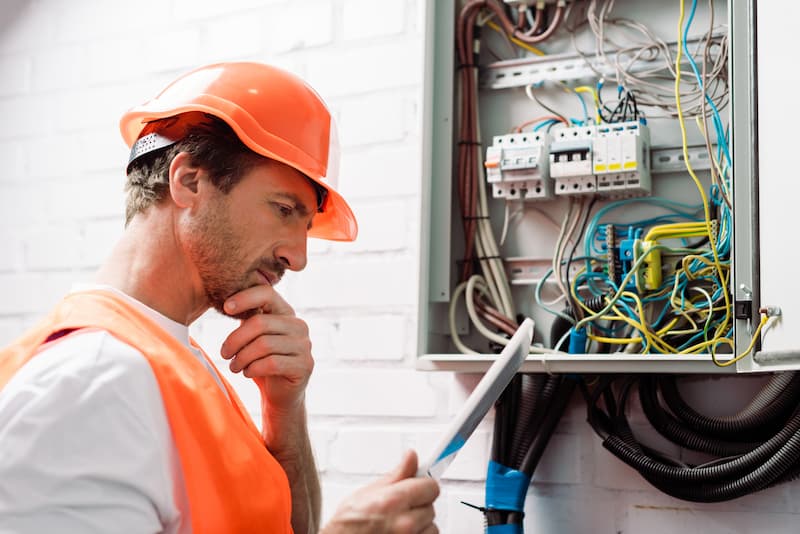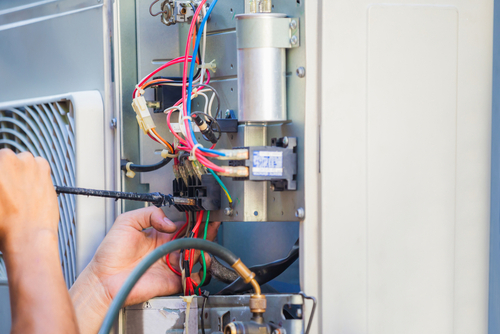Accurate electrical system troubleshooting to meet your needs.
Leading Tips for Effective Electrical System Troubleshooting
Repairing electrical systems requires a methodical strategy, based in a comprehensive understanding of electric concepts and security procedures. By acquainting oneself with circuit components, utilizing crucial tools, and adhering to an organized assessment method, experts can effectively recognize and settle issues. However, the subtleties of efficient repairing expand past mere technological expertise; understanding just how to document searchings for and prioritize safety can considerably influence results. As we explore these essential components even more, it becomes clear that mastering this process is not simply helpful yet necessary for success in the field.
Understand the Fundamentals
Comprehending the basics of electrical systems is important for reliable troubleshooting, as a solid foundation enables specialists to detect and solve issues more successfully. A detailed grasp of electric concepts, such as voltage, present, resistance, and power, is critical in determining the source of problems. Voltage is the electric possible distinction that drives current through a circuit, while resistance opposes the circulation of present, impacting the general functionality of the system.
Knowledge with circuit components, including resistors, capacitors, diodes, and switches over, is also paramount. Each element plays a distinct duty in circuit actions and can impact performance when malfunctioning. In addition, comprehending series and identical circuit configurations is important, as these setups influence the circulation of voltage and existing within the system.
Service technicians have to be aware of prospective risks, such as shock and brief circuits, to execute safe troubleshooting methods. By grasping these fundamental concepts, professionals enhance their ability to conduct reliable diagnostics and repairs, inevitably leading to improved efficiency and integrity of electrical systems (electrical system troubleshooting).
Gather Necessary Tools
Efficient troubleshooting of electrical systems needs the best set of devices to identify and settle issues accurately. A fully equipped service technician can dramatically enhance effectiveness and effectiveness in determining problems. Vital tools include a multimeter, which determines voltage, existing, and resistance, enabling exact evaluations of electric elements. Secure meters are also valuable for measuring current without separating the circuit, making certain safety and security and comfort.
Furthermore, shielded hand devices such as screwdrivers, pliers, and wire strippers are vital for safely controling electric connections. It is likewise suggested to have a circuit tester handy to verify the visibility of voltage in outlets and wires. For even more facility systems, a thermal imaging electronic camera can help identify overheating parts, suggesting possible failures.

Follow a Systematic Method
Having actually gathered the proper devices, the next action in repairing electric systems is to adhere to a systematic technique. A methodical strategy makes certain that professionals can recognize mistakes effectively and properly, lessening downtime and protecting against unneeded repair services.
Begin by assessing the system's schematic representations and requirements. Comprehending the design and operational specifications will certainly give context for identifying concerns. Next, isolate the trouble area by using a process of removal. This entails monitoring each component methodically, beginning with the power resource and working in the direction of the tons.
Utilize testing tools, such as multimeters and oscilloscopes, to collect objective data about voltage, existing, and resistance at different factors within the system. This empirical evidence will direct your troubleshooting efforts and the original source aid to validate or remove potential sources of failure.
In addition, consider environmental aspects that may affect the system's performance, such as temperature fluctuations or wetness ingress. An extensive assessment of wiring, links, and elements will certainly make sure that all opportunities are made up.
Record Your Searchings For
Thorough documents is vital in the troubleshooting process of electrical systems. Exact records boost the efficiency of determining reoccuring issues and help with communication amongst team members. Each finding must be diligently noted, including signs and symptoms observed, tests carried out, and the outcomes of those tests. electrical system troubleshooting. This technique not just help in recognizing the origin of the trouble but additionally serves as a reference for future troubleshooting efforts.

In addition, keeping a log of components changed or fixings done is vital. This info sustains stock monitoring and can help analyze the durability and dependability of specific parts.
Inevitably, the paperwork procedure need to be complete yet succinct, allowing simple retrieval and testimonial - electrical system troubleshooting. By prioritizing comprehensive documents, professionals can create a beneficial knowledge base that not just aids in existing troubleshooting but additionally empowers future maintenance initiatives, therefore improving general system dependability

Prioritize Precaution
Identifying the intrinsic threats associated with electric systems is crucial for guaranteeing safety during troubleshooting. Electric shock, burns, and equipment damage are just a few of the possible dangers that specialists encounter. Focusing on security measures is not only a lawful responsibility yet likewise an ethical see critical that safeguards both the professional and the surrounding setting.
Prior to commencing any type of troubleshooting task, technicians should wear appropriate individual safety equipment (PPE), consisting of shielded handwear covers, shatterproof glass, and flame-resistant apparel. Ensuring that the workplace is dry and cost-free of mess can dramatically lower the risk of crashes. It is crucial to de-energize circuits before beginning any type of job, confirming that they are not live via the use of a multimeter or voltage tester.
Establishing clear interaction methods with employee is also essential; this guarantees that every person is mindful of potential risks and the standing of the electrical system being dealt with. Having an emergency response plan in place can prove invaluable in the occasion of an incident. By focusing on precaution, technicians can effectively alleviate threats and cultivate a safer work environment.
Final Thought
Reliable electrical system repairing depends on a thorough understanding of fundamental concepts and a systematic method. Focusing on security procedures makes over here certain the health of people entailed and the stability of the electrical system.